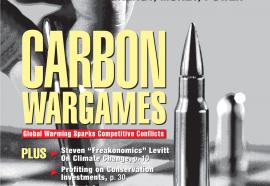Hot-Potato Policy
DOE loan guarantees degenerate into a political game.
Once upon a time, the U.S. Congress started a game of hot potato. The potato, otherwise known as the EPAct Title XVII Loan Guarantee Program, has been bouncing around Washington, D.C., since 2005. But now that the industry is getting a good look at the potato, it looks decidedly funky—stuffed with caveats and half-measures. Whether that’s good or bad depends largely on whether you believe the government belongs in the potato game in the first place.





